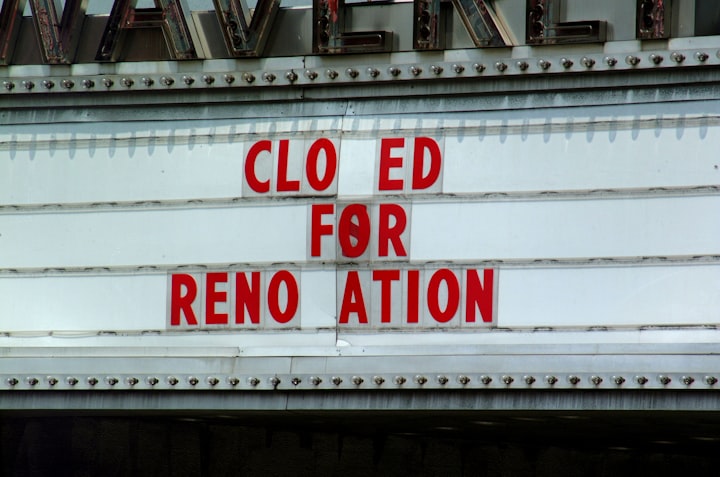A Guide for the Guilty
The Fiction Writer's Handbook for Slandering Real People

Damn you, James Ellroy.
You make it look so easy. Want to give your 1950's crime novel some added verisimilitude? Write Johnny Stomponato, or Meyer Harris Cohen into it! Have your fictional cops go toe-to-toe with real-life baddies!
It does look like such fun. And he makes it look smooth, like integrating the fake and the real can simply be an issue of machining and lubrication. From the beginning of my writing career, I strove to mix the real and the fake in a manner calculated to make the latter look more like the former.
I started off timidly. In the Will Bryant Thrillers, real people's lives intersect the fictional characters' in the past or serve as a current affairs backdrop to the action. You're never in the same room with them.
In Good Time Charlie, I got bolder. The first scene is the real-life murder of a policeman in the Richmond RCMP detachment in September 1980. That was a hard scene to write. For the first time, I was confronted with the question: Is this necessary? I concluded that it was and that I hadn't lingered too much on real, violent death. It was a moment in history and an encounter that defined one of my trinity of central characters.
The inclusion of the monster Clifford Robert Olson in the novel was a purposeful choice, one I felt was entirely necessary to set the tenor of a fear-filled moment in time. He is slime, personified, and he exists mainly to give the policemen of the book a target of their hate and a source of confusion as they chase Charlie.
The hardest scene to write in this vein was one I did a lot of hand wringing over. On Christmas Day, 1980, one of Olson's victims was found abandoned on a dyke in Richmond. She was real, and I changed her last name to protect the frail little girl at least a bit. But she symbolized, for me, the evil that Olson did, and its impact on an ordinary policeman who gives up Christmas dinner with his family to watch her body.
So many of these choices in Good Time Charlie were informed by the feeling of ownership I had over this place and time. I grew up, there and then. I could have been one of Olson's victims, and the model for Charlie is a man who very nearly victimized me. My father faced the dangers of police work there and then. I claim ownership.
So, Good Time Charlie is a special case, one where the writer can, as Ellroy does in The Black Dahlia, assert a right to a special license. My crime books, like Ellroy's, are always more about the cops than they are about the criminals. Cops are my tribe.
But, when you diverge from the personal, and veer into the speculative, or the historical drama, do you lose license? What are your responsibilities, as a writer, to the real people in your books?
I've been binge-watching Craig Mazin's spectacular HBO/Sky miniseries, Chernobyl. And there, I've encountered an instructive dilemma.
Chernobyl is a fictional drama about a real event: The April 26, 1986 explosion of Reactor 4 at the VI Lenin Nuclear Power Plant, and it's the aftermath. A few characters are fictional, or amalgams, like Emily Watson's brilliantly played Ulana Khomyuk, but most are real people. Therein lies the tightrope Mazin had to tread.
Because I, like the Catholic Church, and James Ellroy, am a huge fan of the trinity, I'll focus on Mazin's trinity here. LA Confidential is a trinity of White, Exley, and Vincennes. Good Time Charlie is a trinity of Mulvaney, Murdoch, and Bloomfield.
Chernobyl is a trinity of two parts: Scherbina, Legasov, and Khomyuk, and their opposite numbers. The men the Soviet Union eventually put in the dock for causing the disaster in the first place. Bryukhanov, Fomin, and Dyatlov.
If you haven't seen Chernobyl yet, or know nothing about it, stop here, and watch all of it. It's really too complicated to explain.
All three men were real people. Bryukhanov, the manager of the power station and all four of its reactors; a man who had literally built the station out of a swamp. Fomin, his deputy, an ambitious bureaucrat, was able to call himself a "nuclear engineer" only on the basis of a correspondence course. Dyatlov, a survivor of a nuclear accident in the Soviet Navy, was the man in charge of the fateful test that night in Reactor 4.
There is little controversy about the portrayal of Fomin. Few people had good things to say about him. He comes off as a lickspittle and a bully of limited intelligence. Dyatlov has some defenders, but a consistent narrative over more than thirty years supports the contention that his overbearing management drove Reactor 4 on to the rocks that night. Many of the men who attested to this did so on their deathbeds from radiation poisoning. Pity not Dyatlov.
But Bryukhanov, it seems, is a more complicated type. Adam Higginbotham's Midnight in Chernobyl, it is said, paints a much more sympathetic picture of the man. I'm waiting to read it, so I can't say for sure yet, but it's safe to say Mazin has run into a little controversy here.
Because, inconveniently, Bryukhanov is alive. And he wishes to dispute the matter, as does his son.
Here lies the problem with writing real people into your stories; they don't always play the part you want them to play.
Fiction is all about symmetry and clear moral points of view. This is why the Trinity is so popular. Like biblical trinity, it can represent different moral aspects of a dilemma in the guise of separate people.
Bryukhanov is the State, the never-ending demand: Get it Done. Fomin is personal ambition; Man, I'd look good behind this desk. And Dyatlov is the practical, the Pharoah's slave-driver on the rockface; Akimov and Toptunov, you idiots, get it done!
To borrow a Ukranian metaphor, the three form a sort of nesting doll, each larger one pressing the smaller, in a visual representation of power that must have been irresistible to Mazin. Inside, the smallest piece, is Khomdemchuk, the hapless turbine technician buried in the core and never found; literally crushed by the nesting doll of the state.
Real people do interfere so with a seamless narrative. That's why projects like Chernobyl are so daring and inherently controversial.
In my latest novel, Slowly, the World Burns While I Help to Fan the Flames, there's a lot of real people. One couldn't write an alternative, post-nuclear history of the 1960s without mentioning Hefner, Cleaver, Dino, and Bobby Kennedy. Come on!
But I don't know if I've taken it too far. Have I written a timeless meditation on the nature of patriotism and the futility of nuclear war, or a post-apocalyptic Zelig?
Mixing the real and the make-believe, like splitting the atom, is an exciting experiment. But, like splitting the atom, sometimes the consequences can get a little out of hand.
Post note: I read Midnight in Chernobyl, and I recommend it highly. Higgenbotham's verdicts on the personalities do vary considerably from Mazin's. Bruykhanov comes off as dedicated but frozen in crisis. He wasn't even there when Fomin told Dyatlov to go ahead with the test, apparently. Fomin suffers in both versions—not a likeable person. Dyatlov is portrayed as a champion of the scapegoated reactor operators, particularly Toptunov, who comes off as much less of a willy than he's portrayed by Mazin.
Scherbina, according to Higgenbotham, remained much more of a doctrinaire Communist than Mazin let on. Legasov is not quite as pure as Mazin makes him out to be, either. Of course, Khomyuk is fictional, so she gets to keep her halo.
In the end: It's fiction, folks. And damn good fiction at that. But, as in so many great productions, people get hurt.
About the Creator
Grant Patterson
Grant is a retired law enforcement officer and native of Vancouver, BC. He has also lived in Brazil. He has written fifteen books.






Comments
There are no comments for this story
Be the first to respond and start the conversation.